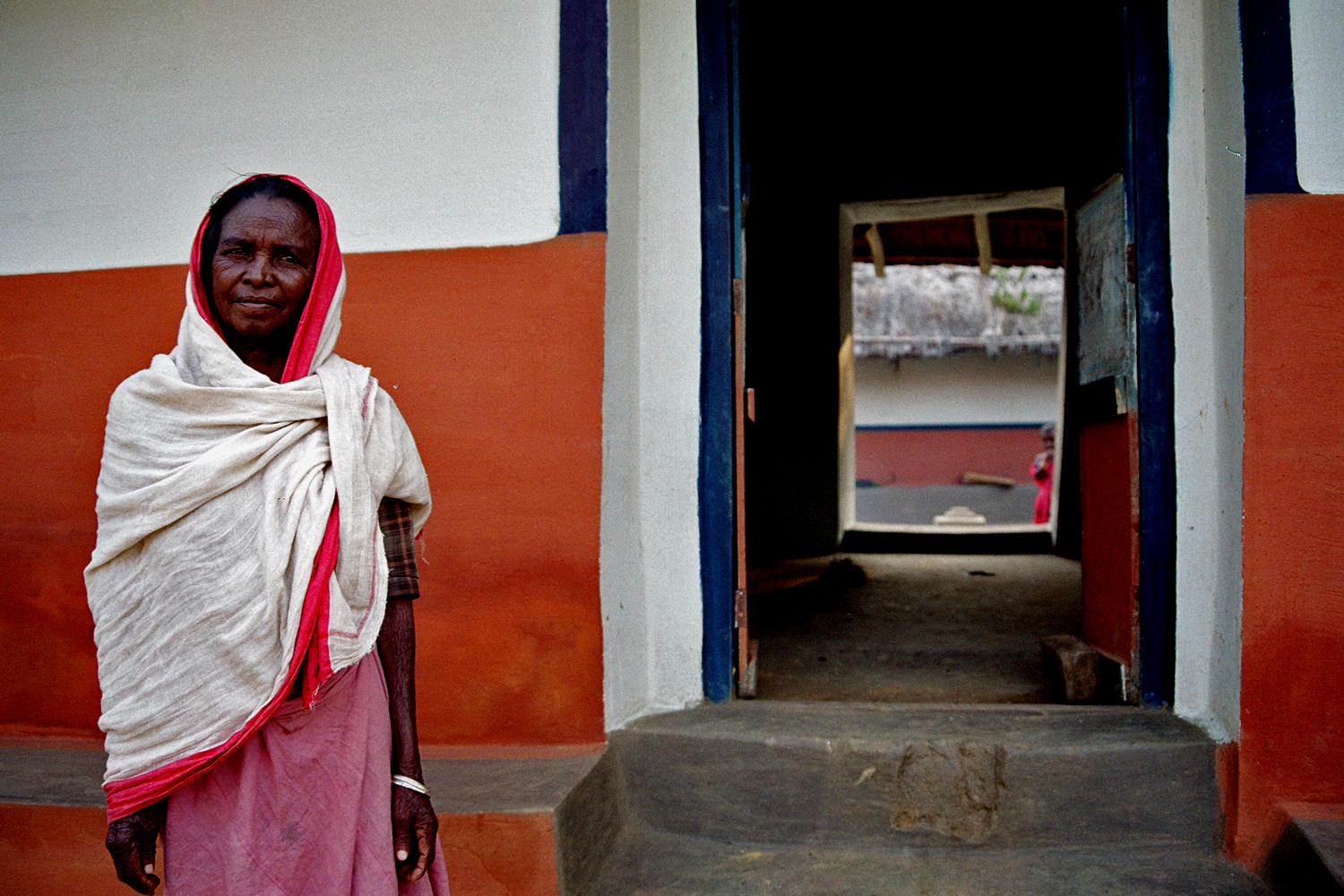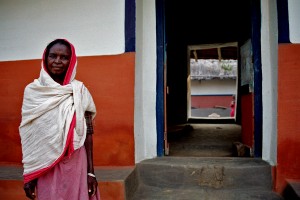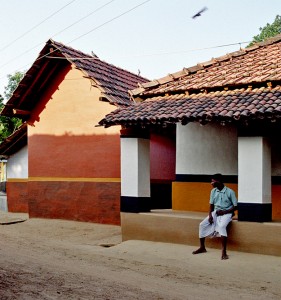 A few winters ago and a long train journey later, I landed in Jamshedpur. Same afternoon was a 35kms away road trip to Jadugoda, the first township established by The Uranium Corporation of India (UCIL) IN 1965. The notoriously-uranium-rich deposit at Jaduguda has been under exploitation since 1962, the only underground mine in India amongst the four prominent uranium-rich-mining zones.
A few winters ago and a long train journey later, I landed in Jamshedpur. Same afternoon was a 35kms away road trip to Jadugoda, the first township established by The Uranium Corporation of India (UCIL) IN 1965. The notoriously-uranium-rich deposit at Jaduguda has been under exploitation since 1962, the only underground mine in India amongst the four prominent uranium-rich-mining zones.
However, my destination was a Santhali village in this pocket and my reason was to document Santhal Architecture. The brief, given by my architect-friend, allowed me an otherwise free-hand but made clear two things: “Become my eyes to the Santhals since I have only heard, never seen their houses” and “Shalini, please include ‘People’ in your photographs”!
The first one sounded like happy trust put into me, the second one totally rattled my confidence. Because this was my first travel-assignment, I was shooting analogue, was just a few months into architectural photography then and shot only buildings which never moved even if I shook, trembled, trapezed or danced. The minute I touched the village roads, I realized, the tripod too was excess baggage. Thus, for those nine days my supposed free-hand wasn’t free any more.
The odds, but immediately, got evened out. It was my first personal introduction to village life and I was delightfully distracted. Not perhaps because it was a village, but because it was a village with the most exquisitely built mud houses.
Santhals are tribal people of eastern India with greatest concentration in the states of Bihar, West Bengal, and Orissa, amongst other tribes like Ho and Mundas. Santhals follow the Sarna religion and are sometimes also called as Manjhi, named after one of the goddesses they worship. They do not have temples or idol-worshiping but worship the land and forests and Kadam tree considered being most sacred in Santhal tradition. Belief in spirits and animal sacrifices are a common practice too.
In the villages, where tribal life continues, the most important economic activity is the cultivation of rice. Many Santhals are also employed in the coal mines near Asansol or the Steel factories in Tatanagar, while others work during part of the year as paid agricultural laborers and some naturally at the UCIL.
Much has been researched and written about Santhal origin and history, their religion, rituals and culture, language, folk-dance, art and festivals, jewelery and even music instruments. But little of their glorious architecture.
The vernacular or tribal architecture in this region is pure in its form and a derivation from their soil and closest to nature. Reflecting the tribe’s agrarian society and built by applying traditional technologies it caters to their specific needs. Accommodating values, art, economies, and ways of life of the cultures that produce them, it is carried forward through generations.
To my mind, elements most emphasized are the symmetry of the Santhal homes and the colors that adorned their almost perfectly aligned walls.
The tribe has a curious tradition of the men building the shell of the house and women with their acute aesthetic sense and deft hands taking up the plastering and painting.The colors used are beautiful oxides found at the foothills surrounding these pockets and the result is a matter of envy for the other tribal-folk. Art and culture of Santhal Tribe used to be depicted in the paintings on the walls of their homes but this intricacy has slowly disappeared.
During my stay there, I sensed that the Santhals regard their granary and their worship space most sacred and these two spaces are normally together which they consider a sacrilege to photograph or sometimes for a stranger to even enter. Most of these tribal people worship the jungles and do not have deities but stones as symbol of god kept in their sanctum. It is like an ante-room, a small dark corner with a raised platform, an earthen lamp lit throughout the day and perhaps also where they keep their valuables.
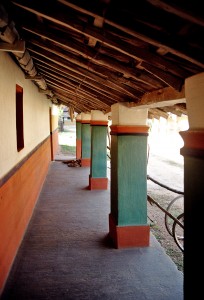 Sometimes circular in plan, the houses are a traditional courtyard layout, few with two courtyards, one as the central space or aangan around which all the rooms are built and another circumferences the premise for those who have larger families and can afford it. Normally the houses grow organically with gradual additions of room as and how the family expands. Next to the granary, is always the kitchen which is also quite dark with just one or two small openings for ventilation but barely lit. The tribe still believes in myths and superstitions, one of them being that the presence of large window opening invites evil spirits into their abode, because of which the windows are very small in size and few in number compared to the long front facades. But they more than compensate, by dressing these windows with bright colors and contrasting motifs on the lintel usually animal and nature figures depicting folklore.
Sometimes circular in plan, the houses are a traditional courtyard layout, few with two courtyards, one as the central space or aangan around which all the rooms are built and another circumferences the premise for those who have larger families and can afford it. Normally the houses grow organically with gradual additions of room as and how the family expands. Next to the granary, is always the kitchen which is also quite dark with just one or two small openings for ventilation but barely lit. The tribe still believes in myths and superstitions, one of them being that the presence of large window opening invites evil spirits into their abode, because of which the windows are very small in size and few in number compared to the long front facades. But they more than compensate, by dressing these windows with bright colors and contrasting motifs on the lintel usually animal and nature figures depicting folklore.
Santhals, like most other tribes, have been known to indulge in witchcraft for reasons both, domestic as well as socio-political. One such being the land-grabbing episodes frequently faced by these tribes owing to their proximity to locations rich in bauxite and uranium vied by the Industrialists.
The tribes near Dumka and Dinghbhum in Bihar, Mayurbhanj in Orissa and Birbhum and Jalpaiguri in West Bengal are supposed to be still very authentically following their crafts and traditions but many others are now getting influenced by the townships which have developed adjoining them.
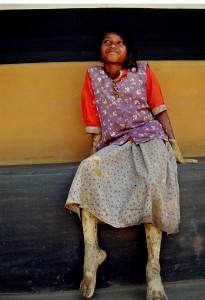 The Santhals though, have managed to retain a rich part of their culture still, however many of their crafts and practices are dying, architecture being one of them. Many non profit groups are formed striving to keep the Santhal heritage from becoming extinct which has been rendered vulnerable while industrialization and its threats loom large.
The Santhals though, have managed to retain a rich part of their culture still, however many of their crafts and practices are dying, architecture being one of them. Many non profit groups are formed striving to keep the Santhal heritage from becoming extinct which has been rendered vulnerable while industrialization and its threats loom large.
On my last day, having shared many of their stories and secrets with the village folk, I was asked to rush back to the town to avoid journey through these naxal active areas before it grew dark. I crossed the road for the umpteenth time, in the middle of which the season’s rice harvest was spread to dry on old saris. I think i must be overwhelmed and it slipped my mind to capture that image.
I returned with many film rolls to be exposed from the houses that I photographed, but most ardently brought back precious faces and memories of those people. To this day still, figuring a way to visit them again and thanking the architect who insisted I included people.






